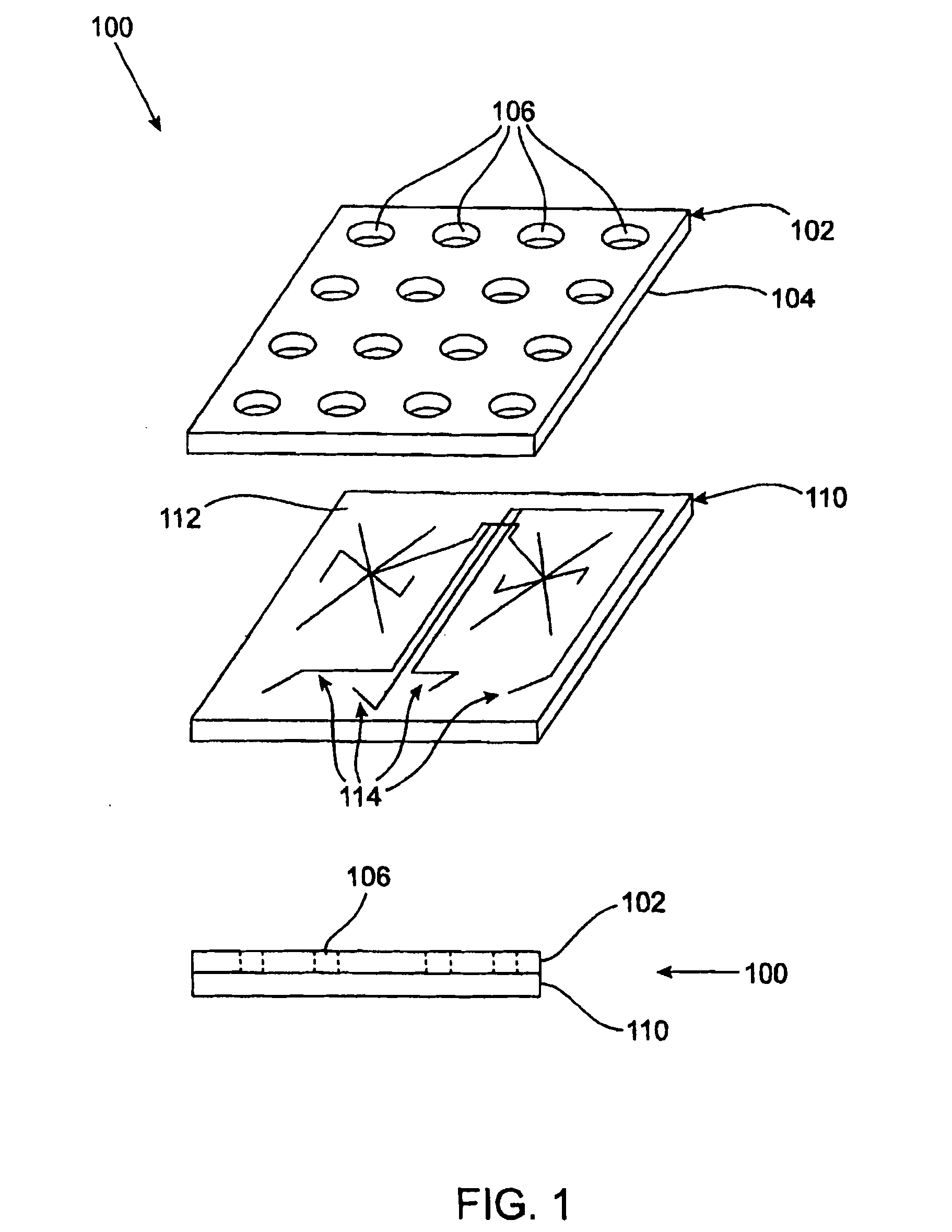Microfluidic device for purifying a biological component using magnetic beads
a microfluidic device and biological component technology, applied in the field of biological component isolation, can solve the problems of complex network of intersecting channels, cost, and diagnostic systems based on microfluidic technology have not reached their potential,
- Summary
- Abstract
- Description
- Claims
- Application Information
AI Technical Summary
Problems solved by technology
Method used
Image
Examples
Embodiment Construction
[0027] As noted previously, embodiments of the present method are directed to extracting a component of interest from a raw biological sample with magnetic beads. Sample preparation processes in accordance with the invention take place in a microfluidic device.
[0028]FIG. 1 is a generic representation of a typical microfluidic device that can be used to carry out methods in accordance with the invention. The top portion of FIG. 1 shows an exploded view of the device 100, which consists of two planar substrates 102,110; and the bottom portion of FIG. 1 shows a side view of the assembled device 100 after the two planar substrates 102,110 have been bonded together. Structures such as channels or chambers are formed within the interior of the assembled microfluidic device 100 by fabricating a pattern of grooves and trenches 114 on a surface 112 of one substrate 110 and bonding a corresponding surface 104 of the other substrate 102 onto the patterned surface 112. When the substrates are ...
PUM
| Property | Measurement | Unit |
|---|---|---|
| radius | aaaaa | aaaaa |
| thickness | aaaaa | aaaaa |
| diameter | aaaaa | aaaaa |
Abstract
Description
Claims
Application Information
 Login to View More
Login to View More - R&D
- Intellectual Property
- Life Sciences
- Materials
- Tech Scout
- Unparalleled Data Quality
- Higher Quality Content
- 60% Fewer Hallucinations
Browse by: Latest US Patents, China's latest patents, Technical Efficacy Thesaurus, Application Domain, Technology Topic, Popular Technical Reports.
© 2025 PatSnap. All rights reserved.Legal|Privacy policy|Modern Slavery Act Transparency Statement|Sitemap|About US| Contact US: help@patsnap.com



